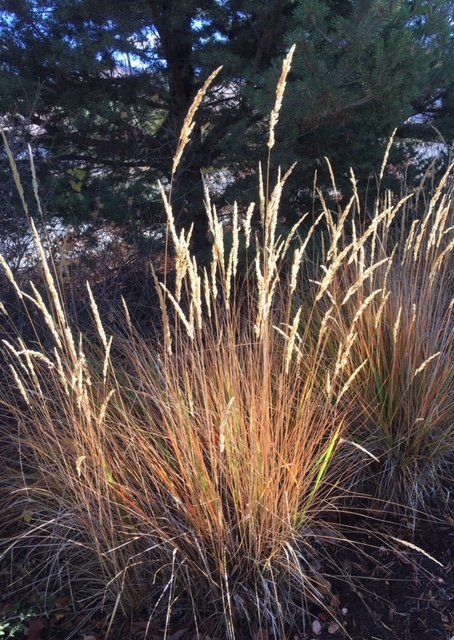Bindweed, Judgement and Other Invasive Species
On a recent shady Missoula evening, I set out into my back yard to do some weeding. I was expecting to tackle dandelions and clover, but I came upon a plant I had never seen before. It blended into the grass quite well, but there seemed to be a little patch of it so I set to work. I slipped my fingers under the leafy weed and tugged only to find that everything around it moved also. It was made up of long shoots, weaving their way through the grass and anchored to the earth by many tiny little roots. As I pulled on it, I could see that it was connected to a whole network of others like it. I began to pull up one small tendril and follow it, gathering up its root system along the way. At first it was kind of fun and satisfying. I followed it as it led me into a denser and denser network of weeds, crowding out the grass and creating an impossible fabric of criss crossing roots in the soil. “Oh my god” I thought to myself. “This is bindweed!”
I have heard my friends and neighbors talk about bindweed over the past twenty years and marveled at the lengths to which they have gone to get rid of it. I felt lucky not to have it in my yard. The truth was, I had never really looked. As the years have progressed, I have been taking care of the lawn more and more, and with the launching of my teenage son to college, it is now my job entirely. The more carefully I have looked at it, the more curious I have become about what else is growing there besides grass.
And so it goes with thoughts…
Almost twenty years ago I attended my first week long residential training retreat in mind-body medicine led by Jon Kabat-Zinn and Saki Santorelli. I had been practicing meditation for a couple of years and was eager to learn more about the direct application of this discipline to health and wellbeing. I was a relative newbie to meditation, so it was not a surprise that I heard many things during that retreat which I did not fully understand. Throughout the week, people spoke about self judgment and their deep sense of unworthiness, lamenting the suffering these thoughts and beliefs were causing them. I considered myself an open minded, kind and compassionate person with pretty good self esteem, and I remember leaving that retreat thinking “I guess I don’t have those issues. Thank goodness!”
As I matured as a practitioner, and I do mean over years, through personal practice, retreats and working with skillful teachers, I began noticing my own tendencies of mind and getting more and more honest with myself about the subtle things my mind was in the habit of churning out.
Most people are familiar with their own inner critic. It may take on the voice of a critical adult from the past or one’s own voice speaking in harsh or even cruel words and tones. It is easiest to notice when it criticizes others in the form of internal verbal banter. Many of us have worked hard to silence, negotiate with and soften that voice in the spirit of being a better person. The inner critic often saves its harshest language and most unforgiving tones for ourselves, and this habit of mind can be even harder to identify and gently retrain. With practice, honesty a good teacher and a big dose of self compassion it is possible to begin to quiet the inner critic, understand its underlying positive intent for us, which is always to try to protect us, and offer both the critical part and the criticized part kindness and compassion.
Self inquiry through mindfulness practice is often described as the peeling of an onion. The layers keep coming off as we go deeper and deeper, but they don’t stop. Under all the verbal barrage of the inner critic, I eventually noticed within myself a layer of preverbal self-judgement, something that had been there so long it had crystalized into belief. It was silent and embodied. It was so clever that it had taken root in many places and connected itself to my whole sense of self and world view. As I became aware of it and poked and tugged on it a bit, I could see how extensive it was. It was manifest in the things I didn’t ask for in my relationships because on some level I believed I did not deserve them, the way I didn’t stand up for myself for fear of making waves or inconveniencing others, and the way I have kept myself small so as not to outgrow the box I thought I should be in. “Oh my god! This is judgement! This is the trance of unworthiness!” This following quotation has been attributed to several different spiritual teachers. This version is from the Dhammapada, Sayings of the Buddha:
The thought manifests as the word;
The word manifests as the deed;
The deed develops into a habit;
The habit hardens into character;
So watch the thought and its ways with care,
And let it spring from love.
As the shadow follows the body,
As we think, so we become.
This is not easy work, it is honest work, and it is freeing work. Sometimes the light of awareness is enough to dispel and dislodge a thought. Sometimes more probing and poking (inquiry) is necessary. As the weeds get pulled out, the grass has more room to flourish. It is the work of a lifetime.
I have no idea how I will get rid of the bindweed in my back yard, or even if I ever will, but now I know that it is there. I can start by not letting it take over. I have a way to work with it that is slow and sustainable. I have my work cut out for me, and I am making friends with the process.
And I may need professional help!

